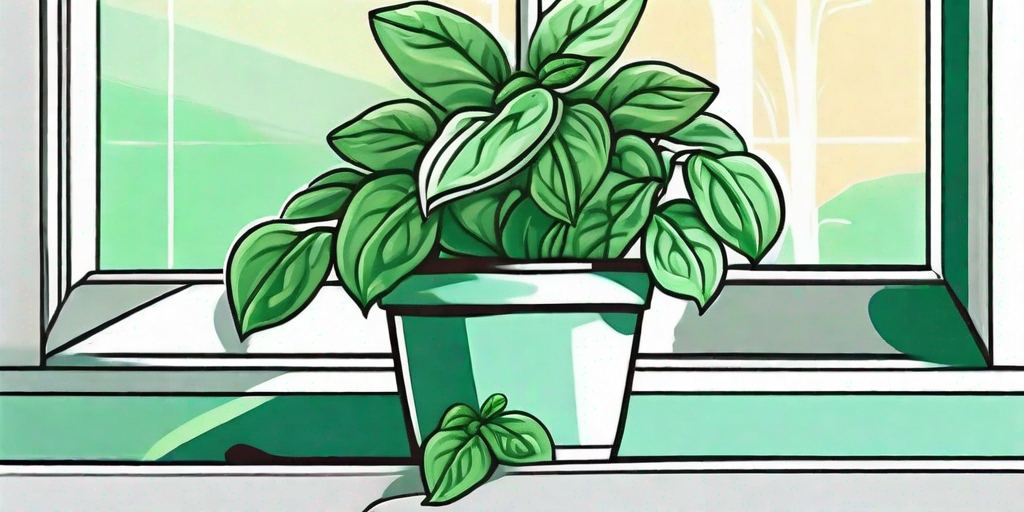
Basil, the king of herbs, is not only a culinary superstar but also a green gem that can add a touch of freshness to your indoor space. But how do you keep this Mediterranean native happy indoors? Fear not, dear reader, this guide will transform you into a basil whisperer in no time.
Understanding Your Basil Plant
Before we dive into the nitty-gritty of basil care, let's get to know our green friend a bit better. Basil, scientifically known as Ocimum basilicum, is a member of the mint family. It's a fast-growing annual that loves warm weather and despises cold drafts. So, if you're the type who cranks up the AC to Arctic levels, you might want to reconsider for the sake of your basil.
There are several varieties of basil, each with its own unique flavor profile and growth habits. Sweet basil is the most common type found in kitchens, but Thai basil, purple basil, and lemon basil are also popular choices for indoor gardening.
Why Grow Basil Indoors?
Aside from the convenience of having fresh basil at your fingertips for your culinary masterpieces, growing basil indoors has other benefits. It's a natural air purifier, helping to improve indoor air quality by absorbing toxins. Plus, it's a mood booster. There's something incredibly satisfying about nurturing a plant and watching it flourish.
And let's not forget the aesthetic appeal. A lush, green basil plant can add a touch of nature to your indoor space, making it feel more vibrant and alive.
How to Keep Your Indoor Basil Plant Thriving
Now that we've established why you should grow basil indoors, let's get down to the business of how to keep it thriving. Fear not, it's not rocket science, but it does require a bit of attention and care.
Lighting
Basil is a sun-loving plant. It needs at least six hours of sunlight each day. So, place your plant near a south-facing window where it can bask in the sun. If you don't have a suitable window, consider using a grow light. Basil isn't picky about the type of light it gets, as long as it's bright.
Rotate your plant every few days to ensure all sides get an equal share of light. This will prevent your basil from leaning towards the light source and growing lopsided.
Watering
When it comes to watering, basil likes to play hard to get. It prefers its soil to be moist but not waterlogged. Overwatering can lead to root rot, which is a death sentence for your plant. A good rule of thumb is to water when the top inch of soil feels dry to the touch.
And remember, basil has a strong dislike for wet feet. So, make sure your pot has good drainage to prevent water from pooling at the bottom.
Feeding
Basil is a heavy feeder. It needs regular feeding to support its fast growth. Use a balanced, water-soluble fertilizer every two weeks during the growing season. In the winter, you can cut back on feeding as the plant's growth slows down.
Remember to follow the fertilizer instructions to avoid overfeeding, which can lead to weak, leggy growth.
Common Problems and Solutions
Even with the best care, your basil plant might encounter a few bumps along the way. But don't panic, most problems can be easily fixed.
Yellow Leaves
Yellow leaves can be a sign of overwatering. Check the soil before watering and make sure it's not soggy. If the problem persists, you might need to repot your plant in fresh, well-draining soil.
Yellow leaves can also indicate a nutrient deficiency. If this is the case, a dose of balanced fertilizer should do the trick.
Leggy Growth
If your basil plant is looking more like a beanstalk than a bush, it's probably not getting enough light. Move it to a brighter location or supplement with a grow light.
Regular pruning can also help promote bushier growth. Don't be shy to give your basil a haircut. It will thank you by producing more delicious leaves.
Frequently Asked Questions
- Can I grow basil from seeds?
Yes, you can. Basil seeds are easy to germinate and grow. Just make sure to provide them with plenty of warmth and light.
- How often should I prune my basil plant?
Regular pruning encourages bushier growth. Aim to prune every two to three weeks during the growing season.
- Can I grow basil year-round indoors?
Yes, with the right conditions, you can enjoy fresh basil all year round. Just remember that basil is an annual, so you'll need to start new plants from seeds or cuttings every year.
There you have it, folks. Your ultimate guide to keeping your indoor basil plant thriving. With a bit of care and attention, you'll be enjoying fresh, homegrown basil in no time. Happy growing!











